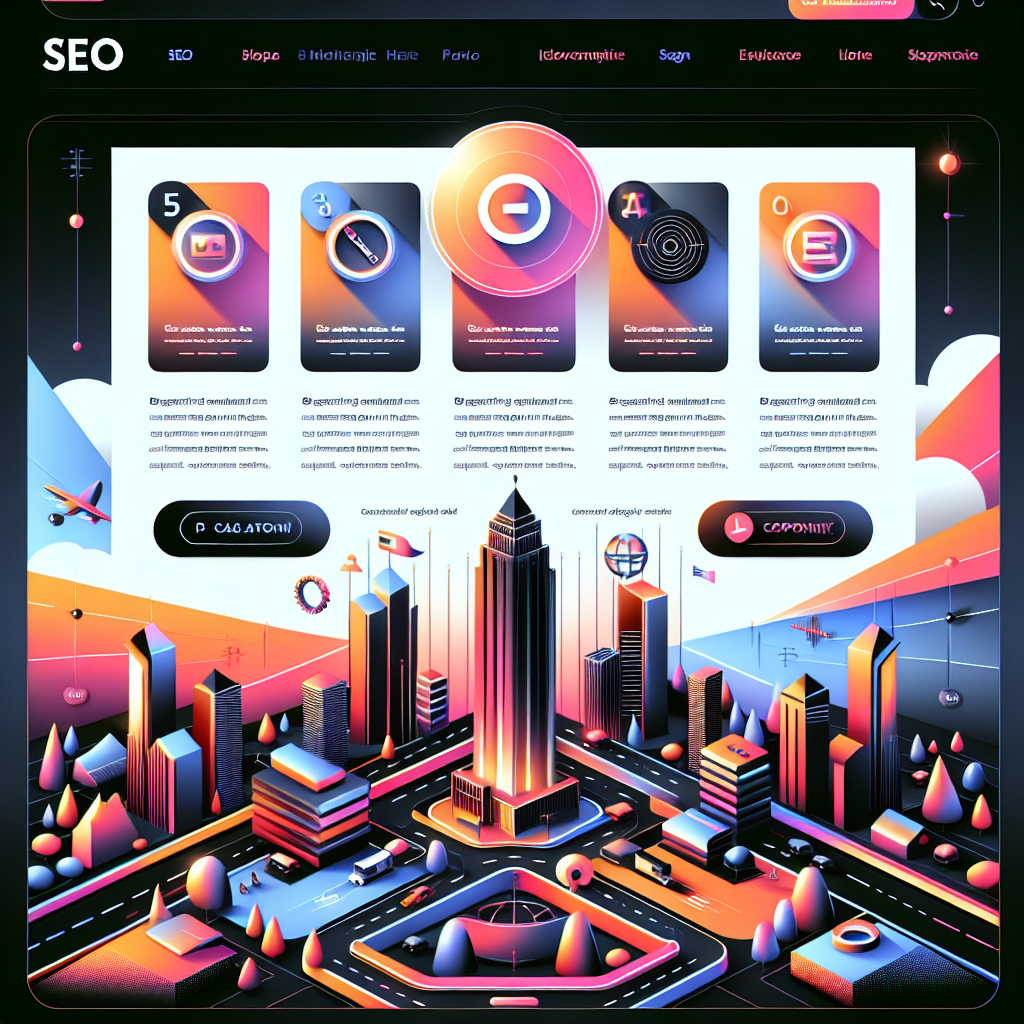Embarking on a journey to master the art of Search Engine Optimization (SEO) is crucial for any business looking to secure a dominant online presence. At its core, SEO is the strategic process of enhancing a website’s visibility in search engine results, ensuring your business stands out in the digital landscape. Understanding the fundamentals involves grasping how search engines operate, the way they index content, and, importantly, the criteria they use to rank websites.
Search engines such as Google deploy complex algorithms that evaluate myriad factors before determining the relevance and authority of your website. These factors include keyword usage, site structure, user experience, mobile-friendliness, and inbound links, among others. By optimizing these elements, your website becomes more attractive to search engines—propelling it up the rankings and driving more organic traffic to your site.
Initiating a successful SEO strategy begins with a comprehensive audit of your website to identify areas that need improvement. From there, you can implement targeted actions to enhance your site’s performance. Remember, SEO is not a one-time task but a continuous effort that evolves with search engine algorithms and industry best practices.
If you’re looking to elevate your online presence, Get a quote from Guru-is.com to craft a customized SEO strategy that aligns with your business goals and drives absolute web success.
Strategic Keyword Research and Targeting
Strategic Keyword Research lies at the heart of any effective SEO campaign. It’s about identifying the terms and phrases your prospects are using to search for services or products like yours. But it’s not just about volume; relevance and competition are equally critical when selecting the right keywords to target. To optimize for the 5 best search engine optimization practices, one must delve into the intent behind the searches, categorizing keywords by buyer readiness—from informational queries to those indicating a strong purchase intent.
Various tools and platforms exist to aid in keyword discovery, including Google’s Keyword Planner, SEMrush, and Ahrefs. These resources provide insights into search volume, trend analysis, and competitive keyword landscapes. By understanding the nuances of keyword demand, you can craft content that resonates with your audience, answering their questions and guiding them through the buyer’s journey.
Once you have a robust list of targeted keywords, the next step is to strategically integrate them into your website’s content, meta tags, and URLs. This not only helps search engines understand the focus of each page but also ensures that when a user lands on your site, they find exactly what they were searching for, thus improving user experience and retention.
Crafting Quality Content for User Engagement

At the core of search engine optimization is Crafting Quality Content that not only engages users but also satisfies search engine algorithms. ‘Content is King’ is a phrase that resonates deeply within the SEO community, and for good reason. High-quality content can elevate a website’s relevance and authority, thereby improving its ranking on search engine result pages.
To create content that both engages users and aligns with the 5 best search engine optimization practices, one must focus on originality, usefulness, and relevance. Google’s algorithms are sophisticated enough to differentiate between content that provides value and content that is written solely for the sake of including keywords. Therefore, it’s essential to craft articles, blogs, and web copy that are informative, well-researched, and that address the specific needs and questions of your target audience.
Moreover, the format and presentation of content play a significant role in user engagement. Breaking up text with subheadings, bullet points, and images can make content more digestible and appealing. Additionally, ensuring that content is shareable via social media platforms can not only increase engagement but also amplify your content’s reach. Remember, engaging content is more likely to generate backlinks, which are a critical ranking factor for search engines.
Mastering On-Page SEO Techniques

Mastering On-Page SEO Techniques is a pivotal step in implementing the 5 best search engine optimization strategies. On-page SEO refers to the practice of optimizing individual web pages in order to rank higher and earn more relevant traffic in search engines. This includes optimizing both the content and HTML source code of a page, unlike off-page SEO which focuses on links and other external signals.
To excel in on-page SEO, several key elements must be addressed:
- Title tags should succinctly convey the topic of the content while incorporating targeted keywords.
- Meta descriptions provide a brief overview of the page’s content and should be compelling enough to encourage clicks from search engine results.
- Header tags (H1, H2, H3, etc.) help to structure content, making it easier for users to read and for search engines to understand the hierarchy and relevance of information.
- URL structure should be clear and include keywords to inform both users and search engines about the page topic.
- Internal linking is crucial for establishing site architecture and spreading link equity.
- Image optimization, including file name and alt text, enhances the relevancy of content and enables search engine crawlers to index images properly.
Each element of on-page SEO works together to improve the visibility and usability of your site. When executed correctly, these techniques help search engines understand the content and context of your pages, which is essential for ranking well. Additionally, they contribute to a better user experience, which can lead to increased engagement and conversion rates.
Building a Strong Backlink Profile

Following the on-page optimizations, Building a Strong Backlink Profile is another cornerstone among the 5 best search engine optimization strategies. A backlink profile is a portfolio of links from external sites that point back to your own website. These are critical for SEO because search engines, particularly Google, view these links as votes of confidence in the quality of your content.
To develop a robust backlink profile, consider the following approaches:
- Creating high-quality, shareable content naturally encourages other websites to link back to your site.
- Guest blogging on reputable sites within your industry can yield valuable backlinks and increase your visibility.
- Engaging in industry forums and contributing to discussions can lead to natural backlinks when referencing your own content.
- Conducting a competitor backlink analysis to understand where similar sites are acquiring links and targeting those sources.
- Reaching out to influencers and websites for collaboration can result in backlinks that enhance your profile.
It’s important to remember that the quality of backlinks often outweighs the quantity. Search engines are adept at identifying spammy or low-quality links, which can harm your rankings. Therefore, focusing on obtaining high-quality backlinks from authoritative websites is more beneficial than accumulating a large number of lesser-quality links. A strong backlink profile not only improves your SEO but also drives targeted traffic to your website, creating more opportunities for conversion.
Measuring SEO Success with Analytics Tools

Measuring SEO Success with Analytics Tools is the final, but no less critical, strategy of the 5 best search engine optimization techniques. Understanding the impact of your SEO efforts is pivotal to refining your strategy and continuing to improve your website’s performance. Utilizing robust analytics tools can provide invaluable insights into traffic patterns, user behavior, and conversion metrics.
Key metrics to monitor include:
- Organic traffic: The number of visitors coming from search engines.
- Bounce rate: The percentage of visitors who navigate away after viewing only one page.
- Conversion rate: The percentage of visitors who take a desired action on your site.
- Keyword rankings: The positions your site holds in the search engine results for specific keywords.
- Backlinks: The number and quality of inbound links to your site.
Google Analytics is a widely-used tool that can help track these metrics and more, giving you a clear picture of where your SEO strategy stands. However, interpreting the data correctly and taking actionable steps based on the findings is where the real expertise comes into play. An experienced SEO professional can help you navigate the intricacies of analytics and turn raw data into a strategic advantage.
At Guru-is.com, we specialize in not just implementing the 5 best search engine optimization strategies but also in meticulously tracking their success. Our team can help you understand your analytics data and use it to continuously optimize your online presence. Unlock the full potential of your website and see tangible results in your business’s growth.
Ready to measure and maximize your SEO success? Get a quote and partner with us for your analytics and optimization needs.
